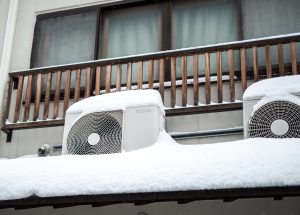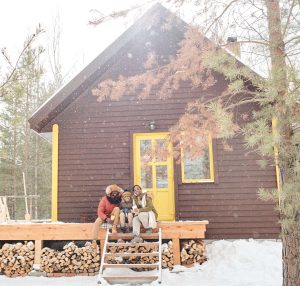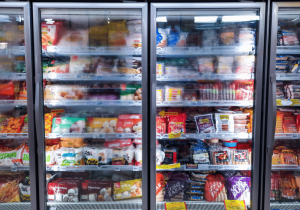Thinking about switching from a traditional central HVAC system? If your goals are lower energy use, better comfort, and a quiet home, a Mitsubishi Electric mini split is worth a close look. It heats and cools by moving heat rather than creating it, which is why modern heat pumps are so efficient.
Quick view of the benefits
- Lower energy use versus electric resistance and many older central systems.
- Room-by-room control to fix uneven temperatures.
- Quiet operation and flexible installation with no major ductwork.
A practical read from the field
Curious how mini splits perform day-to-day? The American Council for an Energy-Efficient Economy (ACEEE) shared “Five Lessons from My First Year with Mini-Split Heat Pumps,” a helpful, non-technical take on living with them. It highlights comfort, learning the controls, and efficient operation in real homes. (We recommend the read.) aceee.org
Reason 1 — Lower Energy Use and Bills
Why heat-pump efficiency wins
Heat pumps don’t burn fuel to make heat. They use a refrigeration cycle to transfer heat, which is inherently more efficient. That’s why they can provide the same comfort using less energy than electric baseboards or aging central equipment—especially with inverter-driven, variable-speed compressors that modulate output to match the load.
When a system can run steadily at partial capacity instead of blasting on/off at full power, it often maintains a higher coefficient of performance (COP) for more hours of the season. Field studies in cold regions have documented strong real-world results for variable-capacity mini splits.
Why this often beats central HVAC
- Many older central systems short-cycle, overshoot, and waste energy.
- Leaky or unbalanced ducts can degrade delivered efficiency and comfort.
- A ductless mini split avoids old duct losses and right-sizes output in real time.
What to ask about ratings (HSPF2/SEER2)
When you compare models, look at HSPF2 (seasonal heating efficiency) and SEER2 (seasonal cooling efficiency). Higher numbers generally mean better performance. Canada aligns metrics with Region V testing and publishes guidance on these newer ratings—use them to compare apples to apples.
Checklist for shoppers
- Ask for the unit’s HSPF2 and SEER2 in writing.
- Confirm the quoted model appears in NRCan/ENERGY STAR product listings.
- Request a room-by-room load calculation so the unit can modulate efficiently.
Reason 2 — Zoned Comfort That Fixes Hot & Cold Spots
Central HVAC pushes the same temperature to every room, even if one side of the home bakes in afternoon sun while the basement stays chilly. A mini split gives zoned control, so the space that needs cooling or heating gets it—without over-conditioning the rest of the house.
Flexible indoor unit options
Mitsubishi Electric offers a range of indoor heads—wall, floor-mount, ceiling cassette, and slim-duct units—so you can target the problem areas and preserve your interior style. This design flexibility is a core strength of ductless systems.
Great use-cases
- Finished basements that stay cold year-round.
- Additions/lofts your central system can’t reach.
- Primary bedrooms with poor airflow or west-facing windows.
- Home offices where quiet and precise control matter.
Real comfort, less waste
Zoned delivery means fewer arguments over the thermostat and fewer hours running the entire system to fix one problem room. Many homeowners report improved sleep and day-to-day comfort once hot/cold spots are addressed. The ACEEE first-year experience echoes that lived reality. aceee.org
Reason 3 — Quiet, Clean Install and Modern Aesthetics
Mini splits are known for low sound levels indoors and outside. Indoor heads operate quietly, and outdoor units are compact—ideal for tight lots or quiet streets. Because the system is ductless, installation avoids major renovations, a big plus for finished homes and heritage houses.
What Ontario homeowners like
- No bulkheads or invasive duct runs.
- Sleek indoor units that blend with interiors.
- Faster installation timelines and minimal disruption.
What is a Mitsubishi Electric ductless mini split?
A ductless mini split has two main parts: an outdoor compressor/condensing unit and one or more indoor air handlers connected by small refrigerant lines. It can heat in winter and cool in summer via a reversing valve—delivering year-round comfort with one system.
Will It Work in Ontario Winters?
Yes—cold-climate air-source heat pumps (ccASHPs) are designed to perform in low temperatures common across Canada. Proper sizing, model selection, and installation are critical. Canada’s official guides define climate zones (most of Southern Ontario is cold/humid) and outline best practices for choosing suitable equipment. Recent Canadian analyses also assess cost-effectiveness and emissions benefits.
Winter-ready selection tips
- Choose models with strong low-temp capacity and defrost control.
- Size for realistic design temperatures in your municipality.
- Keep outdoor clearances for airflow and snow management.
- Consider a slim-duct or multi-split configuration if multiple rooms need heat.

How to Choose and Size (Simple Steps)
- Book a load calculation. A room-by-room assessment ensures the system can modulate efficiently without frequent on/off cycling.
- Compare ratings. Check HSPF2 and SEER2 for the exact model quoted. Higher = better seasonal efficiency.
- Pick single-zone vs multi-zone. One head is ideal for a priority space; multi-zone serves several rooms.
- Plan the line-set path and head locations. Keep runs short and neat for performance and aesthetics.
- Ask about controls. Modern remotes and apps help you fine-tune schedules and fan speeds.
Want this done right the first time? See our mini splits and request a load calculation from Tyger Mechanical’s licensed team.
Costs, Rebates, and Payback: What to Expect
Upfront costs vary with home size, number of indoor units, and electrical work. Many homeowners recoup value through lower energy use, especially when replacing electric resistance heat, and through improved comfort where central HVAC underperforms. Federal and provincial programmes change over time; cold-climate heat pumps may qualify when installed by eligible contractors. Always review current terms before you buy.
Smart ways to plan your budget
- Ask for a good-better-best quote with HSPF2/SEER2 and model numbers.
- Confirm product eligibility in Canadian listings and keep paperwork for any incentives.
- Factor in noise, comfort, and resale—benefits you feel every day.
Get a Fast, Local Quote
Ready to solve hot/cold spots, use less energy, and keep things quiet? Start with a proper load calculation and a clear, line-item quote.
- Next step: Mini Splits
- Talk to us: Contact Tyger Mechanical
Disclaimer: Performance and savings depend on your home, rate plan, and usage. Always consult a licensed HVAC professional.
Further reading: ACEEE’s “Five Lessons from My First Year with Mini-Split Heat Pumps” offers a homeowner-friendly perspective on living with mini splits. aceee.org
FAQs
Are mini splits better than central air?
For many retrofits and problem rooms, yes. Mini splits offer zoned control, high efficiency, and quiet operation without adding ducts. Central systems can be ideal for whole-home distribution when ducts are tight and well designed. The right choice depends on your home and goals.
Do mini splits work in cold Canadian winters?
Cold-climate models are engineered for low temperatures and can perform well in Ontario when properly sized and installed. Follow Canadian sizing guidance and pick models with strong low-temp capacity.
How many rooms can one outdoor unit serve?
You can connect a single indoor head or multiple heads. Multi-splits let you condition several zones while keeping control independent in each space. A load calculation determines the best configuration.
How quiet are they?
Indoor units are designed for low sound levels, and outdoor units are compact and quiet compared to many traditional condensers. Placement also matters; your installer can help.What ratings should I compare?
Look for HSPF2 (heating) and SEER2 (cooling). Higher numbers mean higher seasonal efficiency. Confirm the exact model on the NRCan/ENERGY STAR lists.



